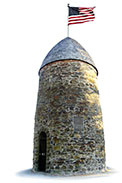
There’s a comforting something in the imagery of health conscious, nature loving individuals shunning their oversized, gas guzzling automobiles and SUVs in favor of pedaling their way to their jobs, schools, and marketplaces in the soft, pastoral glow of self-satisfaction at hopefully “making a difference.”
One real difference, though, is that Somerville is far from being pastoral. Within its roughly four square miles dwells a population of 70,000 or so, with the majority of us choosing to operate our motor vehicles, mostly out of shear necessity.
As one of the most densely populated areas in the country, we may not enjoy having the same options that other cities have at hand. Putting in additional bike lanes may be highly desirable to a certain number of us, but it can be problematic, to say the least.
The costs alone are daunting. And what becomes of a bike lane in the winter when it has been plowed over with snow? Or does anyone actually ride their bike in winter anyway? We’re talking about a lot of expense and hassle for the benefit of a relative few.
Ultimately, how many of us would benefit from expanded bicycle access on the roadways? Would both cyclists and motorists be equally well served? Most importantly, how would this affect the average citizen on the whole?
These are questions which must be weighed, debated, and resolved. We all want a clean, sustainable environment, and we all want to enjoy mobility in the manner of our own personal choosing.
Perhaps a well thought out minimal network of bike routes that can get cyclists through the city in all directions is a fair goal to go for. Let’s think it through.















What doesn’t make sense to me is painting bike symbols on a street where the bike lane IS the same lane as the one the cars are using. What’s the point of that? Anyone driving or biking on those streets knows as a given that one or the other is going to be using it.
Bike lanes only work if the street is wide enough to accommodate both cars and bikes in separate lanes. Lowell and Cedar are not those streets, at least on the two-way side, and that’s the side that includes the opening to the Community Path bike path.
I’ve often found it hard enough driving down Lowell Street with cars coming towards me and trying to squeeze by, let alone drive when there’s a cyclist in front of me slowing down traffic even more.
I know I’m not the only one who has suggested making Lowell and Cedar one-way the entire length of the streets. Doing that would make it possible to establish a separate bike lane, while allowing cars to pass safely at the same time.
If we are going to have bike lanes, they need to make sense, and in an old city filled with narrow streets, many times it doesn’t make sense to expect cars and bikes to share the same street and expect it’s going to be safe.
In an old city filled with narrow streets, what doesn’t make sense is cars everywhere. Lowell and Cedar as one-ways is a fantastic idea. Less street parking, more one-ways, wider sidewalks, better public transit, easy bike access.
As for the editorial how does anybody who lives here ask whether anyone rides their bikes in the winter? There’s bikes zipping all over Somerville all year long.
Yes Linda, I thought from the start the line painting was such a waste of money. First year it was $35000. I think it would be better spent on improving the road surface at least on the part where biking is done so they don’t have to get out of that area due to road conditions. If not at l;east feed the homeless. Such a waste of money.
There’s a lot of speculation in the original post and responses, but census and American Community Survey data shows that over 50% of Somerville residents commute to work by foot, bicycle or transit — and that data is from before the new Orange line station and many of the bike infrastructure improvements. So the conception that in Somerville drivers are “the majority” and non-drivers are “a select few” is just plain wrong. Wrong, untrue, not correct wrong.
It might appear that drivers are the only ones who use Somerville’s streets because currently most city streets cede 100% of their area to drivers and parkers of vehicles.
On the topic of Somerville’s unique street characteristics, this argument always misses the rest of the world – many older European cities with much narrower streets that have chosen to prioritize other forms of transportation, as well as cities like New York and Portland – larger and more congested cities – that have done the same. The difference is will, not street layout.
Finally, the author’s depiction of cycling is poetic, but incomplete – many people bicycle instead of drive for affordability reasons, lack of access to a vehicle or parking, to get to work faster than driving, to get a little exercise, or just because they feel like cycling is a nice way to get around our lovely city.